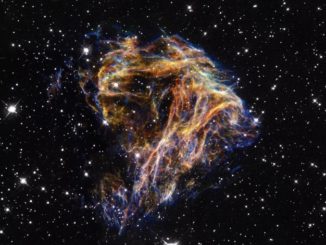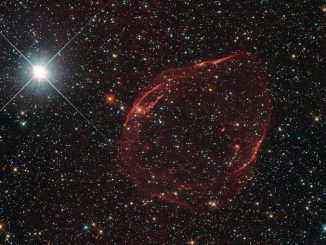NGC 2035, also known as the Dragon’s Head Nebula, is located in the Large Magellanic Cloud, the largest of the Milky Way’s satellite galaxies. The appropriately named Dragon’s Head Nebula, visible to right of center, is a stellar nursery where hot new stars are forming in vast clouds of gas and dust, emitting radiation that is sculpting their surroundings. In spectacular counterpoint, filaments left over from a star that exploded in a supernova blast at the end of its life are visible to the left. Discovered by James Dunlop in 1826, NGC 2035 was imaged here by the European Southern Observatory’s Very Large Telescope.




